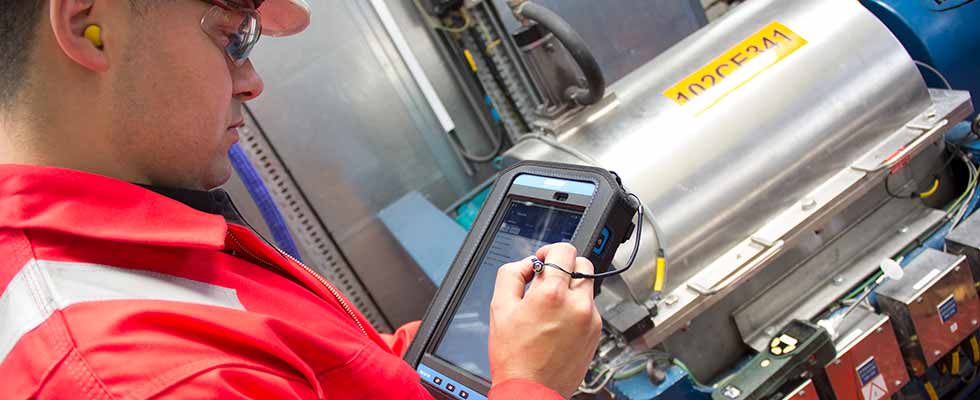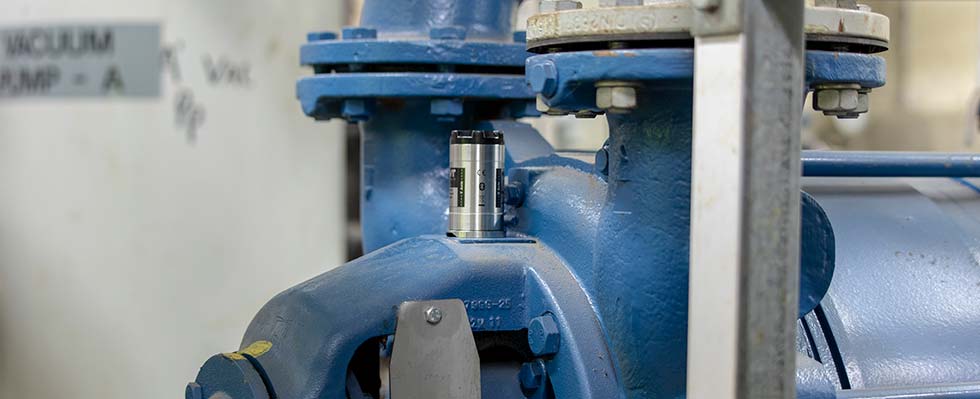
The value of digital data collection from critical assets is increasingly being recognized by companies wishing to implement a proactive condition-based maintenance (CBM) plan. Digital condition monitoring can bring benefits in terms of improved asset performance and life span, reduced downtime, increased safety on the plant floor and more productive use of personnel—all of which can have a significant impact on maintaining a healthy bottom line.
There is a strong argument for making the shift from pen and paper to tablet. However, collecting data digitally is one thing—extracting maximum value from that data is another challenge altogether. Therefore, any manager looking to take the crucial step toward digitalization should carefully consider the capabilities of the technological tools currently on the market to ensure they get the best return on investment. The selection of sensors, the device fixed to a rotating machine to take measurements such as vibration and temperature, is a good place to start.
Limitations of Fixed Sensors
The old adage “you get what you pay for” applies to sensors. There are fixed sensors on the market with low price tags, but they offer only a basic level of monitoring, usually aligned to International Organization for Standardization (ISO) standards for overall vibration levels. These sensors allow little, if any, user intervention or configurability. In many cases, vibration levels are indicated on a simplistic red, amber or green “traffic light” system.
There are limitations to this. An operative has to be physically walking past the machine to see a lighted alert. Once it is spotted, although the system might have issued an alert, there are no means of properly establishing what the issue might be, as there is no data to analyze.
Additionally, the sensor might be configured to take a reading every week, day or hour, so on a machine operating a batch process, and therefore running intermittently, it could potentially be taking readings when the machine is not operational. By contrast, an advanced smart sensor might demand a higher price, however, it also delivers a range of capabilities that bring condition monitoring well and truly into the 21st century.
Benefits of Smart Sensors
Smart sensors, in conjunction with an advanced cloud-based condition monitoring system, can provide the bedrock for a proactive CBM program and optimize the operational and financial efficiency of a plant by delivering:
- configurability
- detailed analysis
- high data storage capability
- accessibility and hazard limitation
An advanced smart sensor has inbuilt configurable features—log frequency, running detection and wake frequency—that enable it both to collect readings after a predetermined time period and to take readings only when the machine is running. For example, after a specified time period, which can be anything from one hour to four weeks, the sensor wakes up ready to collect a set of readings.
The log frequency, when readings are scheduled to be taken, might be set to one week. At that point, the sensor is programmed to respond to a predefined level of vibration that indicates the machine is running (running detection). If the sensor detects that the machine is not running, the wake frequency feature will continue to check, usually every one to five minutes, until the sensor detects that the machine is running. At this point, a full set of triaxial vibration readings will be taken.
This feature is particularly valuable for batch process applications, which run at intermittent intervals and potentially for short periods of time.

Detailed Data Analysis
The cloud-based condition monitoring system, which stores the data collected from smart sensors, takes data analysis to a different level.
For example, a sensor may be configured via the handheld device to the portal, which uses component templates with predefined vibration measurements. This can facilitate different frequency ranges and lines of resolution for vibration measurements, depending on the rotational speeds of the components.
While many sensors only work between 10 hertz (Hz) and 1 kilohertz (kHz), a smart sensor can be configured to take readings up to 5.5 kHz, delivering more information at a greater range and enabling a more tailored condition monitoring solution where required. It can also measure the components’ surface temperature, which is useful for continuously running machines.
One of the major drawbacks of a pen and paper approach to asset management is that the readings might be taken but never used to inform a maintenance plan. Advanced digital data collection can enable up to 5,000 readings to be stored securely in the cloud. An automated diagnostic assistant (ADA) provides real-time analysis and issues alerts that identify impending problems with a machine and suggests preemptive action to avoid unscheduled downtime. This information can be accessed by any authorized personnel from their laptop, from any location in the world.
Improved Accessibility, Enhanced Safety
There are assets and plant areas that have been no-go areas for many years due to their inaccessibility or hazardous nature—think gearboxes on agitator drive units or assets in chemical environments. Fix a smart sensor onto these assets and inaccessibility becomes a problem of the past. Remote data collection via Bluetooth from, for example, an offloading pump or a solvent pump removes the need for any operator to be in the vicinity.
Cost-Benefit Analysis
The only real hindrance to switching to smart sensors is a reluctance to change age-old practices and the perceived capital cost implications of replacing pen and paper with digital tools.
However, there is a return on investment by investing in a digital condition monitoring program. For example, one large chemical company saved £252,320 (U.S. $347,780) over 12 months by planning their maintenance instead of letting critical assets run to failure.
With smart sensors and digital data collection offering improved reliability, productivity and the potential for long-term cost benefits, companies wishing to stay ahead of the digitalization curve should recognize that the time has come to consign pen and paper-based condition monitoring to the wastebin.


